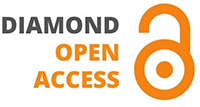El viaje al Pacífico: los fundamentos geo-históricos del «lago español»
DOI:
https://doi.org/10.5944/etfiv.28.2015.15632Palabras clave:
Exploraciones oceánicas, Pacífico, Lago español, galeón de Manilla, mitos, Oceanic explorations, Pacific, Spanish lake, Manila Galleon, MythsResumen
A pesar de la incapacidad, por parte de Cristóbal Colon, de entender que se topaba con una barrera inesperada, la realidad de la existencia de un «mar del sur» bautizado por Francisco Magallanes como el océano Pacífico se impone a los europeos en unos 30 años después de la toma de control del océano Atlántico. Sin embargo, el conocimiento del Pacífico siguió siendo muy parcial hasta mediados del siglo XVIII. El principal objetivo de este texto será de reflexionar sobre el porqué de este desfase cronológico entre el temprano descubrimiento inicial y la tardía exploración. Se trata de insistir aquí sobre los diversos obstáculos que frenaron el viaje al Pacífico, favoreciendo el funcionamiento de lo que, en su tiempo, Pierre Chaunu bautizó como el «lago español».
Despite the Christopher Columbus’ inability in understanding that he had bumped into an unexpected barrier, the fact of the existence of a ‘South Sea’ —which was named by Francisco Magallanes as the Pacific Ocean— resulted clear to the Europeans not before about 30 years after the takeover of the Atlantic Ocean. However, the knowledge of Pacific remained very partial on the mid-eighteenth century. The main objective of this text is to reflect about this time lag between the early discovery and its later exploration. It’ll insist here on the various obstacles that slowed the navigation to the Pacific, favouring the settlement of what, at the time, Pierre Chaunu dubbed the ‘Spanish lake’.
Descargas
Descargas
Cómo citar
Número
Sección
Licencia
Los autores que publican en esta revista están de acuerdo con los siguientes términos:
- Los autores conservan los derechos de autor (copyright) de las obras publicadas y garantizan a la revista el derecho de ser la primera publicación del trabajo al igual que permiten la reutilización del mismo bajo la licencia de uso indicada en el punto 2.
- Las obras se publican en la edición electrónica de la revista bajo bajo una licencia Creative Commons Reconocimiento-NoComercial 4.0 Internacional, que permite a otros compartir el trabajo con un reconocimiento de la autoría del trabajo y de la publicación inicial en esta revista. Se pueden copiar, usar, difundir, transmitir y exponer públicamente, siempre que: i) se cite la autoría y la fuente original de su publicación (revista, editorial y URL de la obra); ii) no se usen para fines comerciales.
- Se permite y se anima a los autores a difundir electrónicamente las versiones pre-print (versión antes de ser evaluada) y/o post-print (versión evaluada y aceptada para su publicación) de sus obras antes de su publicación, ya que favorece su circulación y difusión más temprana y con ello un posible aumento en su citación y alcance entre la comunidad académica (por ejemplo, en repositorios institucionales o en su propio sitio web). Color RoMEO: verde. (Véase The Effect of Open Access) (en inglés).
Authors who publish in this journal agree to the following terms:
- Authors retain copyright and grant the journal right of the first publication with the work simultaneously licensed under a license Creative Commons Reconocimiento-NoComercial 4.0 Internacional that allows others to share the work with an acknowledgement of the work's authorship and initial publication in this journal.
- Authors are able to enter into separate, additional contractual arrangements for the non-exclusive distribution of the journal's published version of the work (e.g., post it to an institutional repository or publish it in a book), with an acknowledgement of its initial publication in this journal.
- Authors are permitted and encouraged to post their work online (e.g., in institutional repositories or on their website) prior to and during the submission process, as it can lead to productive exchanges, as well as to earlier and greater citation of the published work (See The Effect of Open Access).








